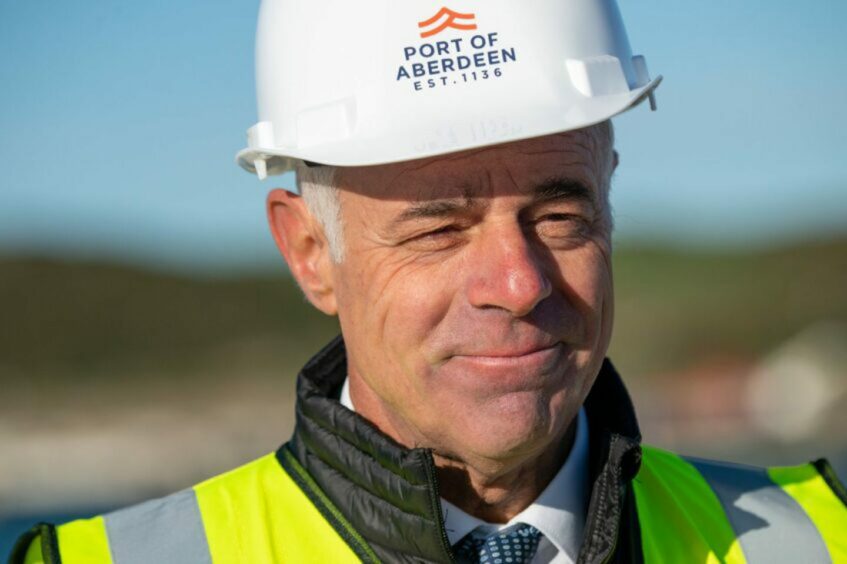
2023 was a historic year for this part of the world that I’m proud to call home.
A North East businessman announced he intends to run for US president again, a Ballater resident ascended to the throne and the city was transformed into Moscow and Japan for an AppleTV blockbuster movie!
And, for the first time in almost 900 years, the city had a new harbour.
The inauguration of Aberdeen South Harbour by Her Royal Highness The Princess Royal was the culmination of 11 years of dedicated work, defined by determination, innovation and collaboration. This achievement is even more impressive given the challenges faced in recent years including COVID-19, changes in project management, the exponential rise of construction costs, and the cost-of-living and energy crisis.
The port expansion has added 1,500 metres of deepwater quayside – longer than the ‘Granite Mile’ of Union Street – making Aberdeen the largest berthage port in Scotland, trebled our deepwater capacity and nearly doubled the length of ships we can accommodate, now up to 300 metres.
This strategic development will be at the heart of the nation’s energy transition and drive to net zero.
Half of the port’s revenue currently comes from oil and gas, a sector that will remain vital to our business for decades to come. We are a good indicator of what’s happening in the wider industry. If there’s less activity in the North Sea, we see fewer ships. The recent offshore licensing round by the UK Government, although promising, will take time to impact activities such as surveying or drilling.
Meanwhile, we are seeing the start of the energy transition at a micro level. In 2023, more than 700 vessels, representing around 12% of total vessel traffic, were linked to offshore wind projects. A gradual shift from fossil fuels is essential, preventing any gaps before renewables reach full potential and ensuing we transition skills and jobs, as well as energy sources.
Offshore wind, once in its infancy when South Harbour was planned, and now presents a significant opportunity for growth, with INTOG and ScotWind projects on the horizon.
We already offer a world-class hub for marine logistics throughout the offshore wind lifecycle, and with South Harbour we’re now entering the assembly and integration market.
However, there are more than 160 floating offshore wind turbine designs in the mix, of varying lengths and depths. Without knowing which of these will be commercialised, planning further enhancements to the port, such as additional dredging, poses questions about optimal depth and cost-effectiveness.
To maximise this opportunity for the local supply chain and Scotland more widely, clear direction and engagement from both private and public sectors on what’s required from ports for projects is crucial.
As work continues at pace to decarbonise our energy system Aberdeen is playing a leading, national role to decarbonise the UK’s maritime sector. We have the bold ambition to become the UK’s first net zero port by 2040 and launched our strategy in April 2023 to deliver this. We’re taking significant and sustained action, in partnership with our stakeholders, to reduce emissions in the port, facilitate future fuels and support the energy transition. We’ve made a good start, but there’s a long way to go.
The expanded Port of Aberdeen is more than just a physical extension; it’s a catalyst for growth in energy, trade, and tourism. We have a pivotal role to play in job creation and sustainable economic growth, ultimately contributing to the prosperity of future generations in the region.
Recommended for you
